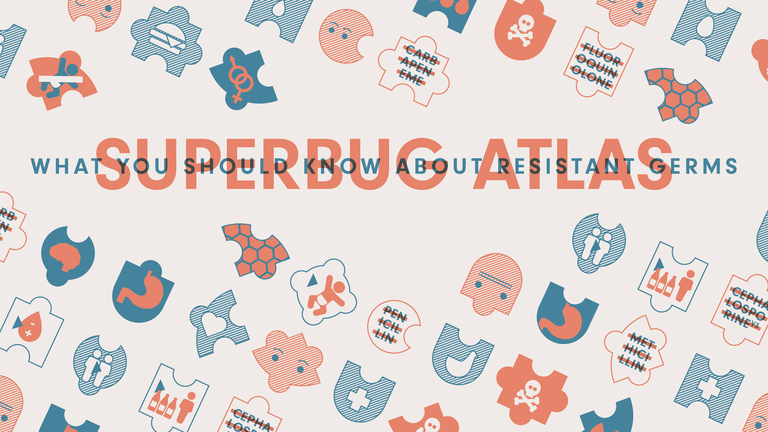Dark Outlook
Since the existence of antibiotics, bacteria have been learning to deal with them. Today, there is a lot of attention on these bugs. What is lacking, however, are reliable data – and effective treatments.

In May 1944, the Scottish bacteriologist Alexander Fleming is pictured on the cover of the American magazine, Time. The title: „His Penicillin Will Save More Lives Than War Can Spend.“ Fleming is a star of this era. A year later, in December 1945, he receives the Nobel Prize in Medicine, for his role in discovering antibiotics.
But Fleming does not celebrate his own breakthrough. His speech is cautious. He speaks about the dangers that await, should bacteria learn to resist antibiotics. „The time may come when penicillin can be bought by anyone in the shops“, he says. He speaks of a man who can breed a resistant bug within himself and infect his wife – who dies thereof.
Almost exactly 70 years have passed since Fleming’s speech. His premonitions have proven prophetic: The dangers that threaten humanity through resistant bugs are increasing. The topic is getting a lot of attention. There is a European Antibiotic Awareness Day and a World Antibiotic Awareness Week. Even Angela Merkel and Barack Obama talked about resistant bugs at this year’s G-7 summit in Schloss Elmau, Germany.
Some experts proclaim a future similar to the middle ages: That soon, more people will be dying of resistant bugs than of cancer, around ten million deaths per year. Because supposedly nothing will work against the deadly germs, not antibiotics, nothing. These prognoses should be read with caution, because they are built on a thin base of facts.
But the number of resistant germs is increasing worldwide, and it is becoming more and more difficult to discover new and effective antibiotics. Paradoxically, the success of antibiotics have made them unprofitable – with their help, infections have become much rarer in many countries. Pharmaceutical companies are reluctant to make the large investments necessary for research – also because they may be developing a drug that will be useless in a couple of years, as the bug it targets becomes resistant.
Are we really steering towards an era in which no antibiotic is effective, in which we die of infected teeth? Or a cut from the kitchen knife?
Infections have many causes
It is not that simple. Not all bacteria become resistant. And resistant germs are not always more dangerous than their non-resistant relatives, says Gerd Fätkenheuer, infectiologist at the University of Cologne, Germany. He gives the notorious MRSA as an example. Its non-resistant cousin, MSSA, is as dangerous, and the treatment is similar. Altogether, Fätkenheuer sees a positive development over the last few years: „Earlier, we had worse and fewer drugs to choose from. This has changed.“
Antibiotics were not solely responsible for the drastically diminished number of infections, writes British infection researcher Hugh Pennington in his new book, „Have Bacteria Won?“ Better nutrition, hygiene and clean drinking water have been at least as important, he says. Infections have been retreating even since before antibiotics were introduced, says the bacteriologist, who is among the most prominent in Great Britain and has researched and fought many infection outbreaks.
He breaks with the myth that without antibiotics, every surgery would be life threatening. That is „scaremongering“ that is based on wrong prognoses, he says.
What we know
Different international initiatives are collecting data on resistance. They are organized by the WHO, for example, or in Europe by the „European Antimicrobial Resistance Surveillance Network“. It includes all states of the EU, Norway and Iceland, and tracks eight germs. Countries outside the EU are surveyed by the „Central Asian and Eastern European Surveillance of Antimicrobial Resistance“. An additional network collects data on foodborne germs.
Here we show the distribution of the resistant bacteria that the WHO has classified as most important. Without knowing how common individual resistant germs are, we can neither research the causes of resistance, nor can we know, which measures against it are working.
Resistance differs significantly from country to country and from germ to germ. Trends are difficult to explain. For example, the notorious MRSA has actually been declining in Europe for years, without a clear explanation as to why. On the other hand, resistance amongst hospital bugs like Escherichia coli and Klebsiella peumoniae is increasing, worrying researchers.
Scientists still don’t understand why there are higher resistance levels in the south of Europe than in the north. One of the reasons is likely lax handling of antibiotics. In Greece, for example, the drugs can be bought without a prescription. But the more carelessly antibiotics are used, the more bacteria can adapt to them.
Insufficient data
The clarity provided through these maps is tempting, but it is deceiving. The data is incomplete, as it is collected on a voluntary basis. There are big differences between the numbers of participating hospitals in each country. This can lead to strong distortions. For example, smaller countries primarily include university hospitals, which muddles the data as these hospitals usually see more serious cases – and probably treat more patients with resistant bacteria.
Additionally, the data has a very rough resolution. How much resistance is present in different regions, cities or even in each individual hospital, is hardly known publicly. The fact that Europe has such weaknesses is a serious problem.
Consumption among humans and animals
How many antibiotics are used on humans and animals? The data here is similarly scarce – there is little detailed information and, often, numbers are submitted only voluntarily. Yet the understanding of consumption is crucial when it comes to understanding – and fighting resistance. At the beginning of 2015, the European Commission published a detailed report, which compared the consumption between humans and animals.
The report examined, for the first time, the importance of animals in the development of resistant germs in Europe. Its conclusion: the report found a connection between the consumption of some antibiotics in farm animals and occurrence of resistant bugs in humans. The exact nature of this connection, and its relevance, is still poorly understood.
Antibiotics as growth promoters
Indiscriminate use of antibiotics in animal production is a highly controversial topic in society. For example, antibiotics are partly used to promote growth because they have the enigmatic property of leading to weight gain when used in low concentrations in animals, and probably in humans.
In contrast to the US, the use of antibiotics as growth promoters is no longer allowed in the EU. But it still happens under the cover of preventive medical care. Veterinary doctors are sometimes incentivized to prescribe more antibiotics. In Germany, for example, veterinarians act as pharmacists and doctors in one, profiting from antibiotic sales. Some even get their main income from prescriptions.
According to the report, animals in the EU consumed more antibiotics than humans. Per kilogram of body weight, animals used 144 milligrams of antibiotics, and humans 116 in one year. There were big differences between individual countries: In 15 EU-countries antibiotic consumption was lower in animals than in people, in three EU-countries it was similar and in eight EU-countries animals consumed more than humans.
Germany, Italy and Spain used the most antibiotics in farm animals – each around 1500 tonnes per year. These countries were also leading relative consumption per kilogram of produced meat – accompanied by France and Cyprus. Also, antibiotics that are especially important for human use are commonly being used in animals. Human use per capita was highest in France and Italy.
This data also has weaknesses. The researchers in the study had to group different antibiotics together, in some countries antibiotic consumption in hospitals were not included, and data was not available for individual animals. Here, there is also a large lack of transparency: The public does not know which farmers use especially large quantities of antibiotics, and therefore induce the most resistance.
Fighting resistant germs
It is hard to get a clear picture of the problem’s scale – it is even harder to make recommendations on how to prevent the spread of superbugs. Hiring more nursing staff to treat infections is expensive. Additionally, isolating patients that might have superbugs is complex and can harm these patients, as their medical care becomes more difficult.
But one thing is clear: The fewer antibiotics we use, the longer they stay effective. There is scientific evidence for this. And often it is possible to turn back the resistance of the germs, if a drug is used very seldom. If germs do not come into contact with a substance, it is not evolutionary inefficient for them to continue to fight this substance. The resistant genes within the germs become rarer.
Therefore, we should think more about the use of antibiotics. But there is a huge gap between resolution and reality, especially among people. About one in two Europeans thinks that antibiotics should be used to treat a flu or a cold, and ask to be treated with antibiotics – despite all of the campaigns and reminders. However, most cases, the flu or a cold are caused by viruses, which means antibiotics are completely useless.
You can easily reach our reporter Hristio Boytchev at hristio.boytchev@correctiv.org
copy editing: Christine Coester
header photo: Ivo Mayr




